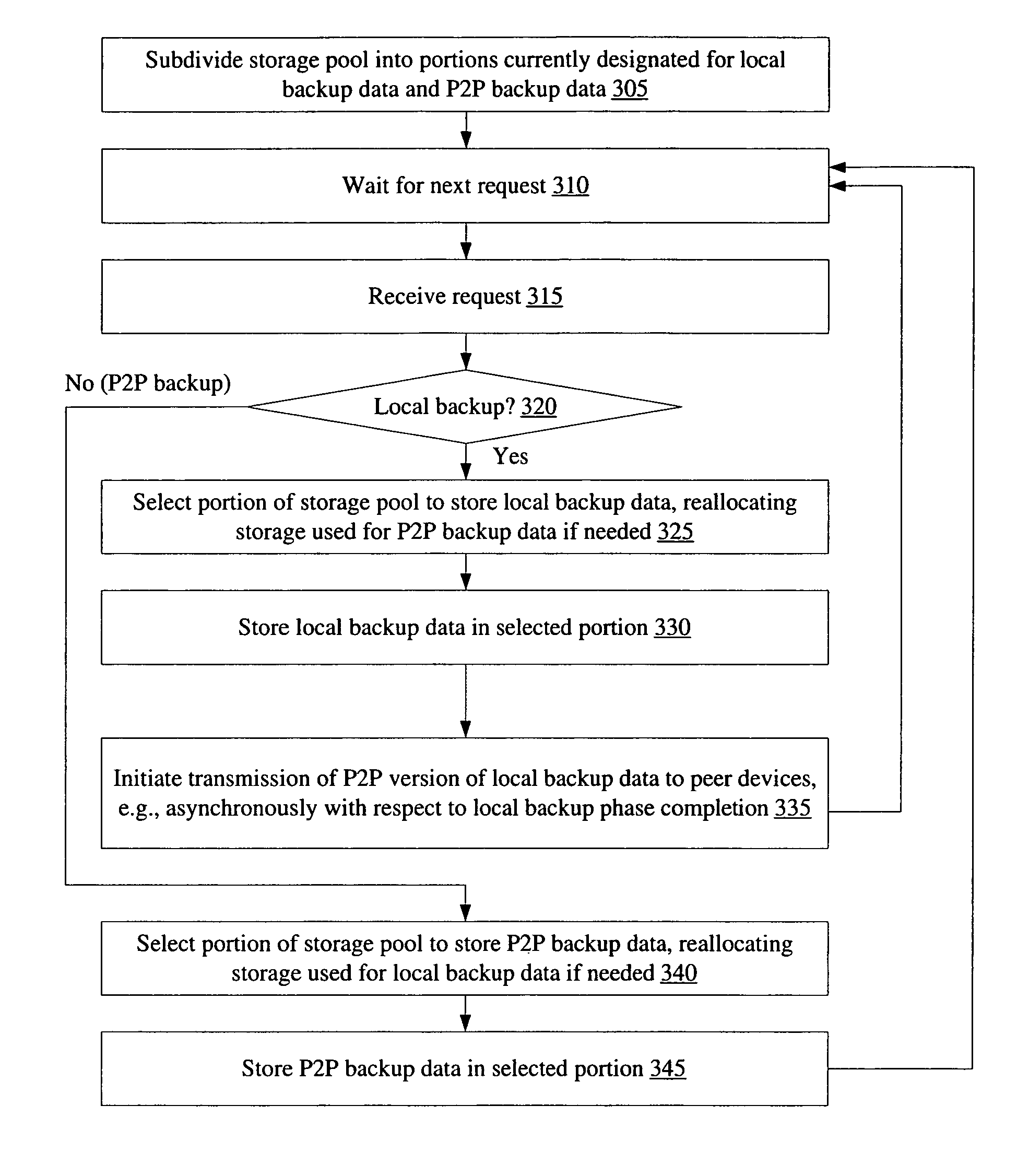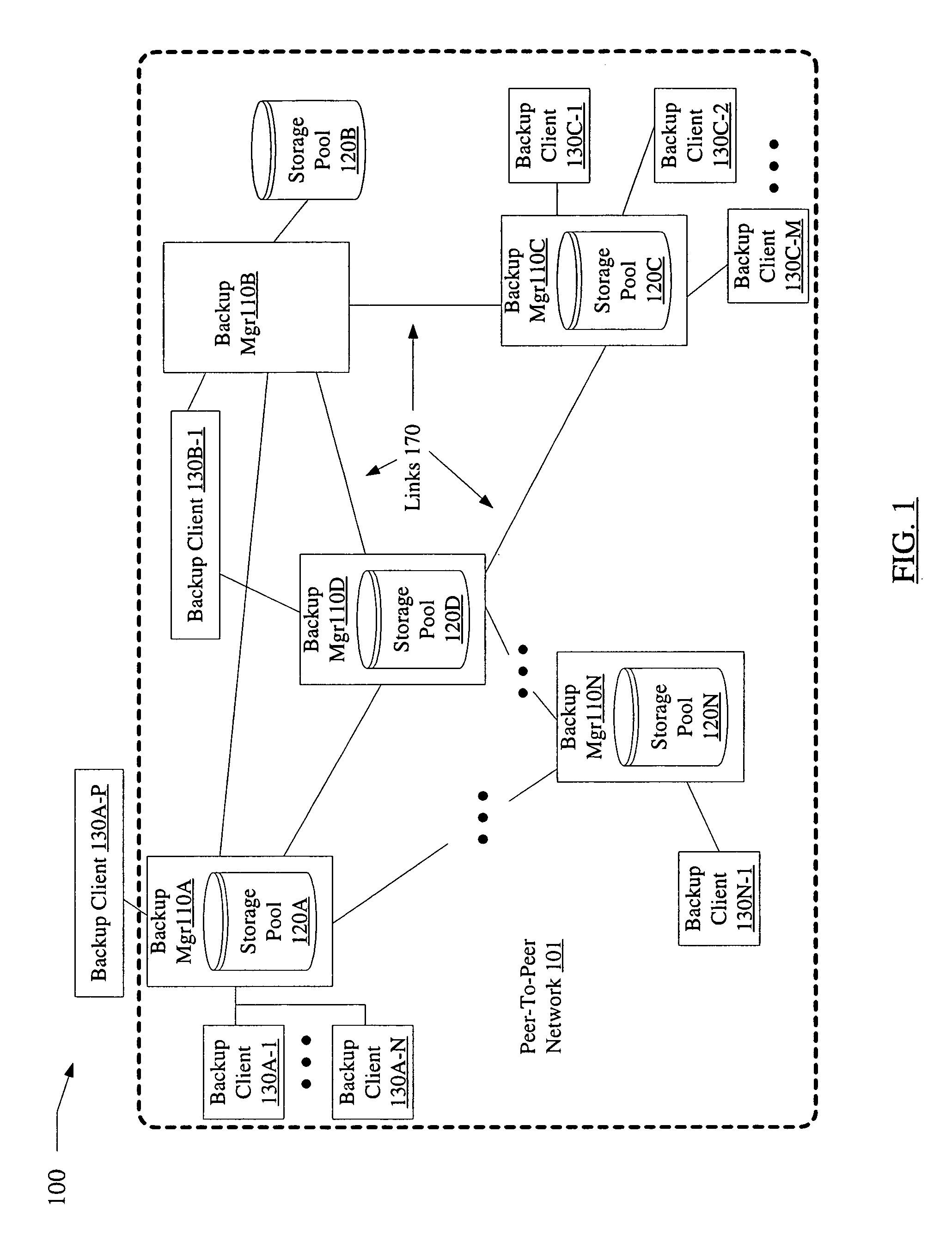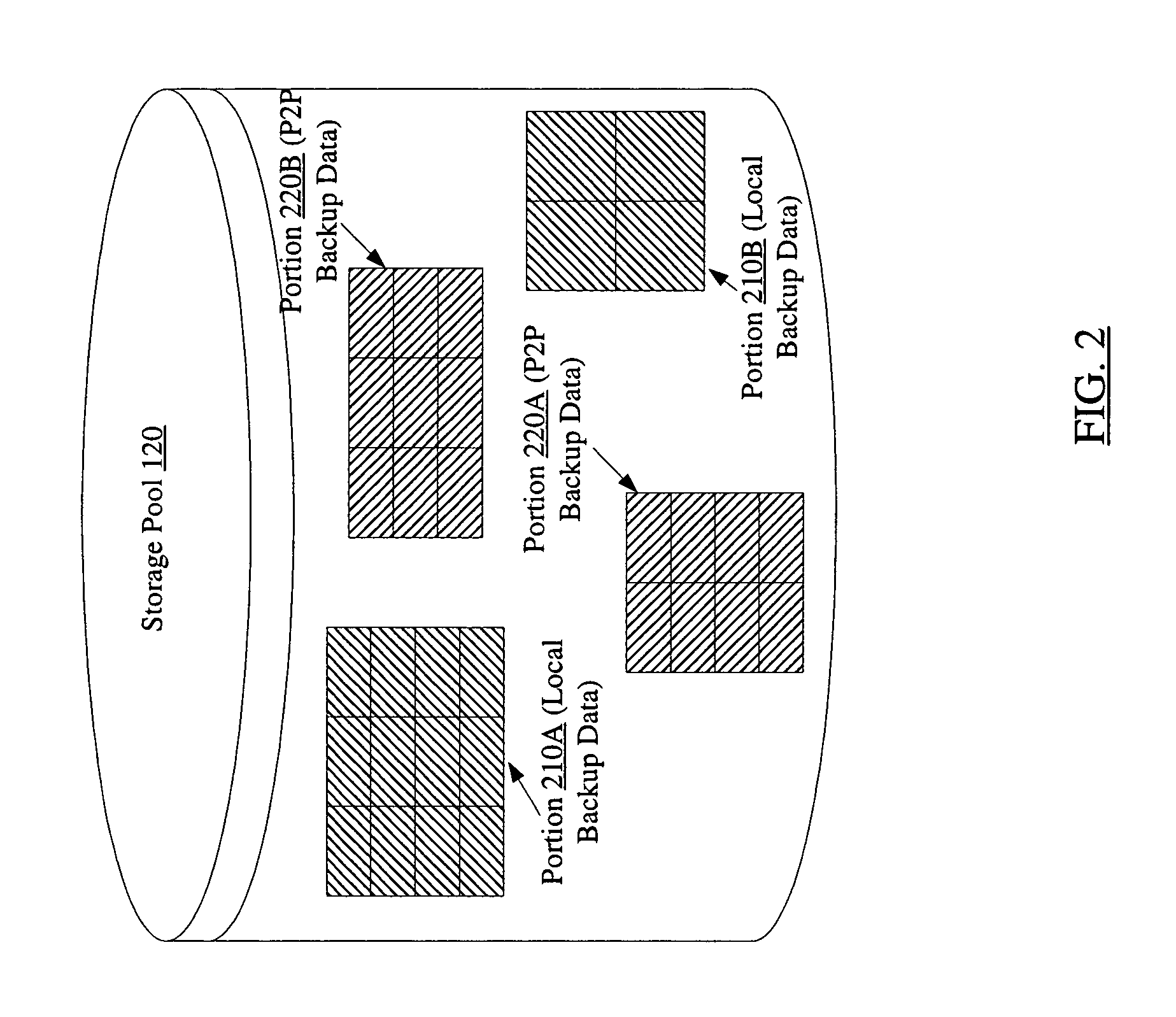Efficient backups using dynamically shared storage pools in peer-to-peer networks
a technology of peer-to-peer network and storage pool, applied in the field of computer systems, can solve the problems of insufficient backup, unsatisfactory backup, and rework of personal data such as photographs, financial documents, and may be lost or corrupted from home computers and other devices outside corporate boundaries, so as to reduce the overall storage required for backups, and eliminate some of the processing, storage and/or networking burden.
- Summary
- Abstract
- Description
- Claims
- Application Information
AI Technical Summary
Benefits of technology
Problems solved by technology
Method used
Image
Examples
Embodiment Construction
[0019]FIG. 1 is a block diagram illustrating a system 100 according to one embodiment. As shown, system 100 includes a plurality of backup managers 110 (e.g., backup managers 110A-110N) and a plurality of backup clients 130 (e.g., backup clients 130A-1-130A-N, 130A-P, 130B-1, 130C-1-130C-M, and 130N-1). At any given point of time, at least some of the backup managers 110 and at least some of the backup clients 130 may be linked to one another via links such as links 170 of network 101 in a peer-to-peer (P2P) configuration to implement an efficient distributed backup technique described below in further detail. For example, at the point of time illustrated in the exemplary configuration illustrated in FIG. 1, all the backup managers shown, and all the backup clients shown except backup client 130A-P, form part of the peer-to-peer network. The set of devices in the P2P network (such as backup managers 110 and backup clients 130) may collectively be termed “peer devices” or “P2P device...
PUM
 Login to View More
Login to View More Abstract
Description
Claims
Application Information
 Login to View More
Login to View More - R&D
- Intellectual Property
- Life Sciences
- Materials
- Tech Scout
- Unparalleled Data Quality
- Higher Quality Content
- 60% Fewer Hallucinations
Browse by: Latest US Patents, China's latest patents, Technical Efficacy Thesaurus, Application Domain, Technology Topic, Popular Technical Reports.
© 2025 PatSnap. All rights reserved.Legal|Privacy policy|Modern Slavery Act Transparency Statement|Sitemap|About US| Contact US: help@patsnap.com



